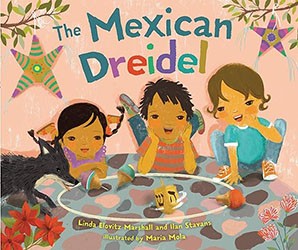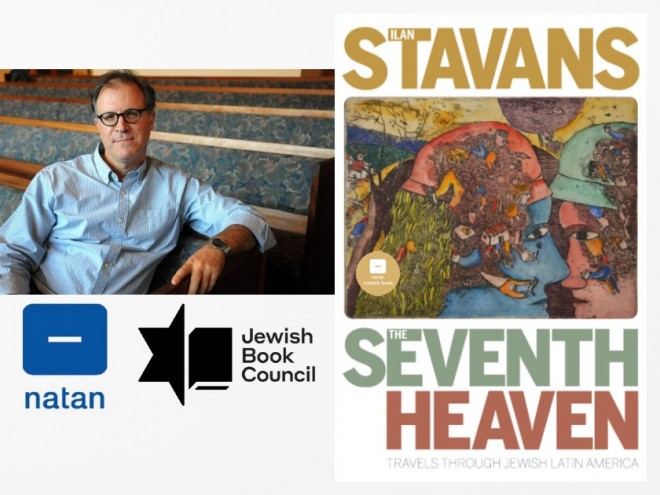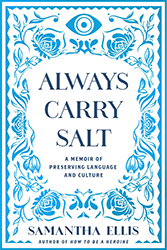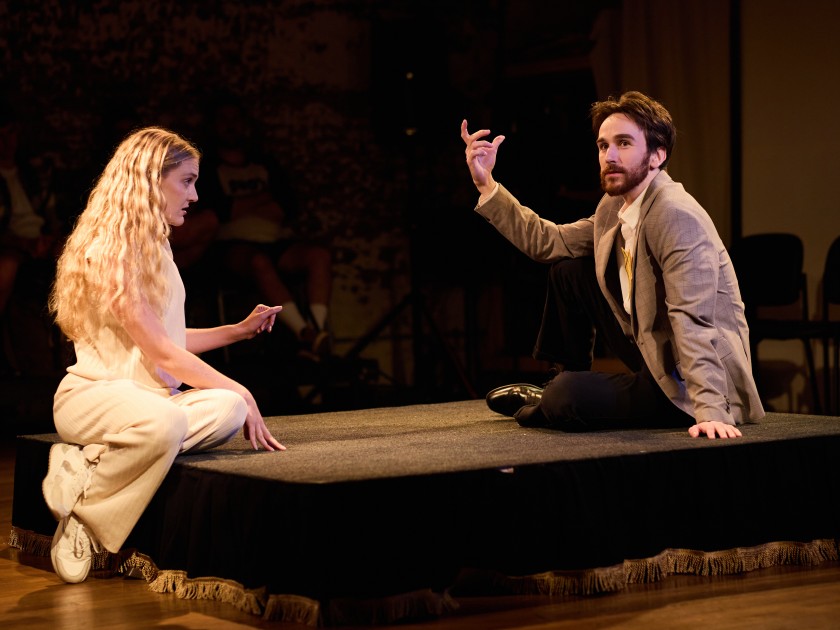
Photo by Austin Progrob, Still from the production of Anne Frank in Mt. Vernon, Ohio
I grew up in a Mexican American Jewish household in western Massachusetts where all questions were encouraged. The limits of discussion were the boundaries of my awareness. That is not to say that any inquiry would go answered, but I was encouraged to verbalize my thoughts nonetheless. And I had many after I saw my grandfather perform in reruns of the Mexican sitcom El Chavo del Ocho. For one, I wanted to know why he was more proud of his work on stage than on screen. His work in telenovelas were my pathway into his life as an actor. Due to the ephemerality of theater, I never had the opportunity to see the three El Violinista en el Tejado (Fiddler on the Roof in Spanish) he was involved in, or any of the more than fifty productions that he worked on throughout his long career in Mexico City. Over time, his preference began to make sense to me. After he passed, I went to see the Yiddish revival of Fiddler in New York City. To sit in a room as someone sang stories, asked questions about their present day, and dreamed of a better tomorrow — the experience was similar to my childhood dinner table. Like my grandfather, my questions would find a home in the theater when I became an actor and a playwright. None of this was a coincidence. There is a deep synergy between the values of American Jewish families and stories told on stage.
In an acting career, there are rare instances when a role aligns so deeply with one’s identity that it feels like kismet. I had one such experience when I acted in Chautauqua Theater Company’s production of Paula Vogel’s Indecent, a play about the first kiss shared between two women on Broadway and the European émigrés who brought it to life. Among the characters I would portray, the most central was Sholem Asch, the author of the play within the play. Asch was a Yiddish literary giant who, fleeing antisemitism in Europe, immigrated to New York in 1914. Throughout his life, he was ambivalent about America, but he understood its role as a safe haven for persecuted people. For me, Asch’s experience as a diasporic Jew was profoundly resonant. The role was an opportunity to portray the story of my ancestors.
I grew up in a Mexican American Jewish household in western Massachusetts where all questions were encouraged. The limits of discussion were the boundaries of my awareness.
Jewish theater artists occupy a unique space — they are one of the few minority groups who can, to some extent, opt in or out of their identity. Halfway through the play, Vogel introduces a new character, Virginia McFadden, to replace a beloved cast member whose English isn’t strong enough for the translated 1922 New York run of The God of Vengeance, the play within the play. McFadden, a recent Smith College graduate, is introduced for comic effect as young, inexperienced, and exceedingly goyish. She has never performed before, and after her first rehearsal, she gushes to her scene partner about how exciting it is to play a queer character on stage. This moment encapsulates the beauty and impact of American Jewish theater. From the moment Jewish artists arrived on American stages, they left an indelible mark across all disciplines, from writing and acting to design and technical work. Much of that impact is not work that is explicitly Jewish. The actress who played Virginia McFadden at Chautauqua Theater Company happened to be Jewish. Many of the cast members were. Some were not. After performances, audience members would linger, eager to confirm their theories about who was and wasn’t Jewish. It became an unrequested game of successful assimilation. Sometimes they guessed correctly. Often, they were completely wrong.
And yet, Jewishness in theater is never truly invisible. Historically, the stage has demanded a defining feature to mark a Jewish character, often reducing Jewish identity to caricature. The most enduring symbol of this is the nose — worn as a prosthetic by non-Jewish actors portraying Jewish roles, from Shakespeare’s The Merchant of Venice, where Shylock was performed with a hooked nose, to Bradley Cooper’s recent portrayal of Leonard Bernstein in Maestro. Even when Jewishness isn’t explicitly acknowledged, its presence — or absence — becomes a statement in itself. However antisemitic these caricatures may have been, they are a window into how an actor and production interpret personhood. They reveal not only how Jews are perceived but also how we perceive ourselves.
Many of the most iconic Jewish-American plays—Fiddler on the Roof, Angels in America, and more recently Bad Jews—contain humor, even in their darkest moments. The humor isn’t incidental; it’s part of how Jewish stories get told. It allows for vulnerability while creating a bridge between Jewish experiences and broader audiences. My play, Anne Frank in Mt. Vernon, Ohio, explores the tension between the two. It follows a community theater leader, eager to bring outside voices to his small town, who decides to write his own stage adaptation of Anne Frank’s story, and a young Christian woman finds herself drawn to the role of Anne after a genetic test reveals to her a minute amount of Jewish ancestry. The play reflects my own experiences with antisemitism, many of which stem from ignorance rather than malice. It challenges audiences to sit with the discomfort of cultural appropriation while still rooting for characters who, despite their misguided actions, sincerely strive to make their town more inclusive.
At its best, theater forces audiences to witness contradictions without resolution, and to do so in community with others. It’s a way to approach Jewish identity without sentimentality, allowing for contradiction and complexity. As we tell our children to ask questions, we do not do so only to lead them to answers. We tell our children to ask questions to encourage them to involve their community in their quest to find answers. Like stories and theater, life is more meaningful when done together.
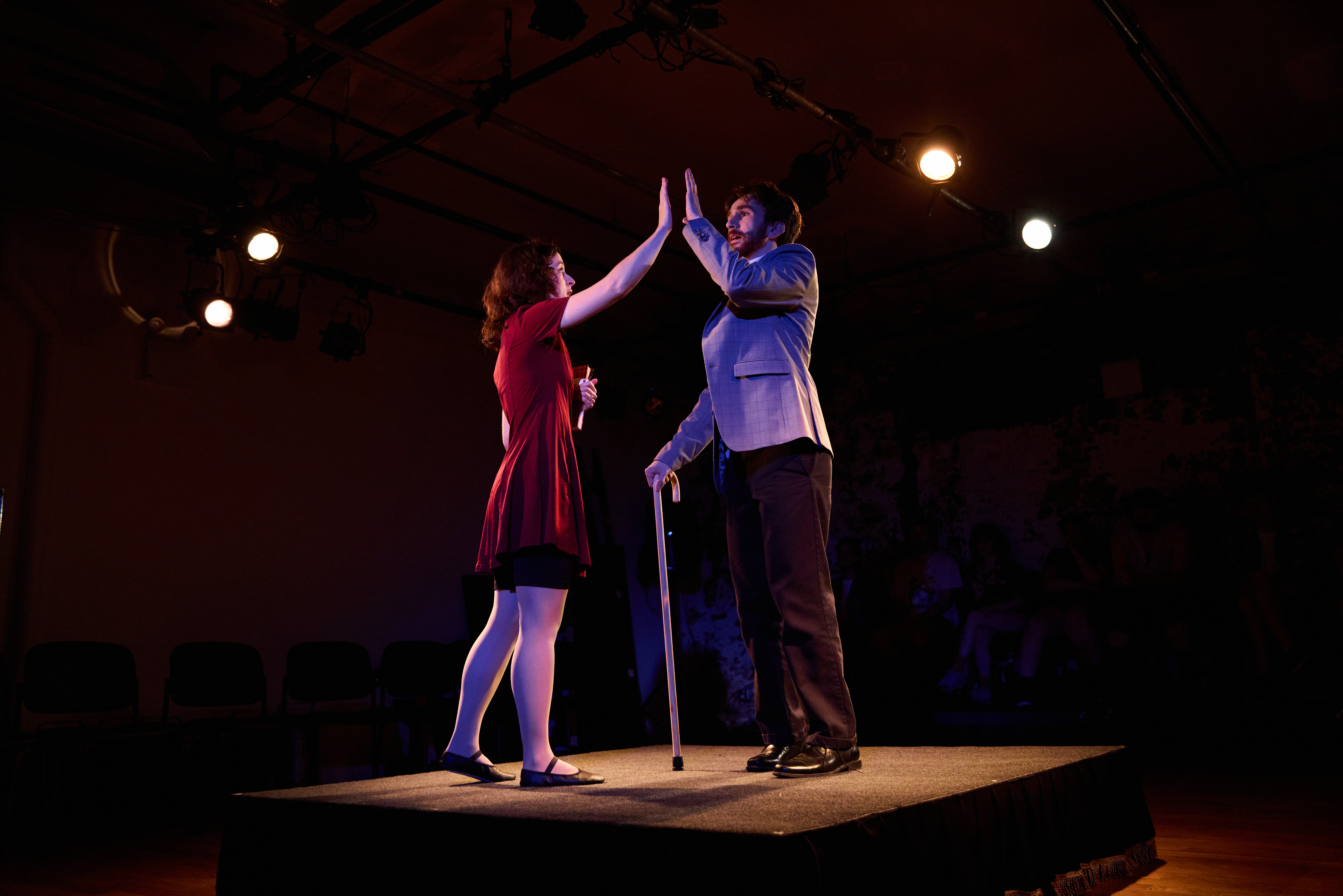
Photo by Austin Progrob, Still from the production of Anne Frank in Mt. Vernon, Ohio
Isaiah Stavchansky is a Mexican-American writer, performer, and educator. His work has been developed and performed at The Edith Wharton House, Slough Farm, New York Foundation for the Arts, The Workshop Theater, Williamstown Theatre Festival, Blue Bird Theater Company, The Mark O’Donnell Theater, and The Tank NYC. He is the editor of “What This Place Makes Me: A Collection of 21st Century American Plays on Immigration,” published by Restless Books. Isaiah is a graduate of Kenyon College and Atlantic Acting School.
